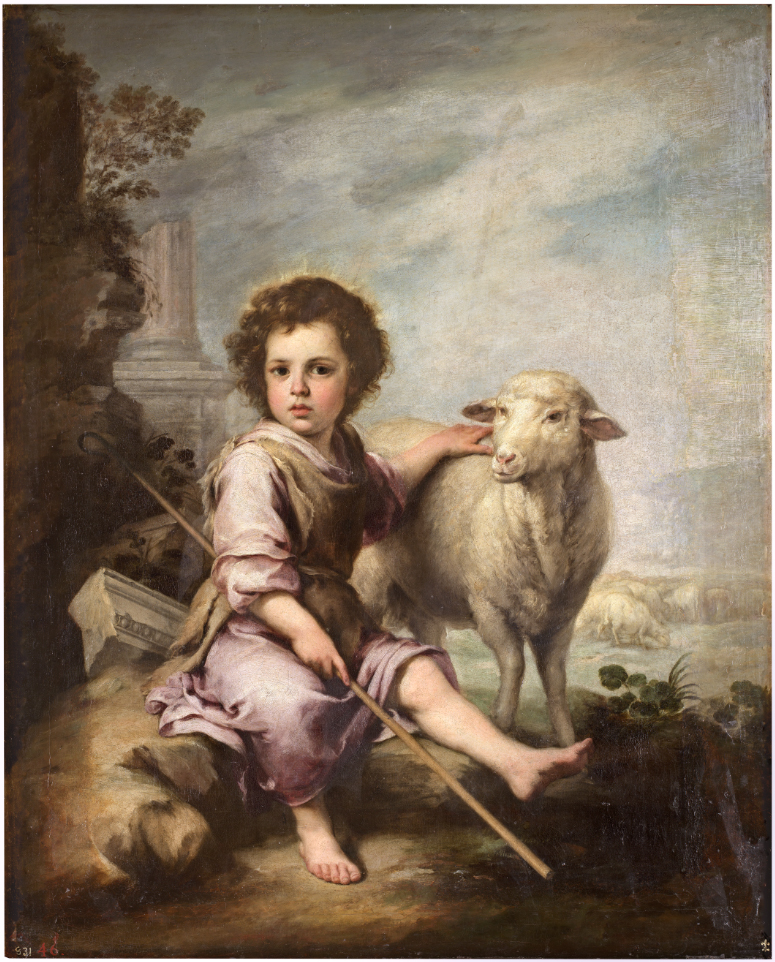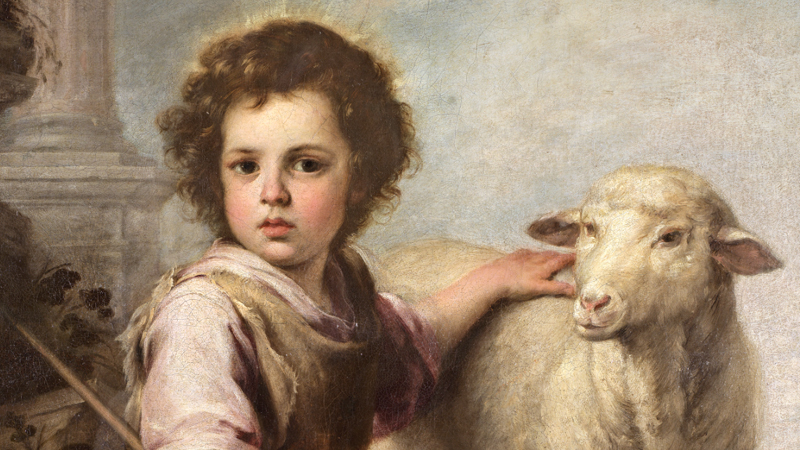GUEST WORK
The Good Shepherd
Bartolomé Esteban Murillo
Museo Nacional del Prado
Born in Seville in 1617, Murillo was one of the most important painters of the Spanish Baroque. His serene, intimate, and transcendent naturalism translated a sensibility and spirituality that were very common in his time, when religious experiences involved the contemplation of divine beauty and sweetness. Among his devotional works, the images dedicated to the holy childhood were the most popular, as they portrayed an empathic, almost sweet, picture of the sacred turned human. The Good Shepherd, in the Museo del Prado, a painting from the peak of the artist’s career, is one of the best examples of this depiction due to its blend of lyricism and piety.
At first glance, the image of a small boy with his flock seems to display merely a vision of pastoral innocence, with the ruins in the background invoking nostalgia for a long-lost past. But this bucolic, almost arcadian, vision is imbued with important religious meaning. The ruins symbolise the victory of Christianity over a pagan world, and the Child is a skilful reinvention of a famous biblical parable: Christ as the Good Sheperd: the one who guides and protects the herd, saving animals from being led astray, but also who would give his life for his sheep. Through a delicate palette and a mastery of drawing, light and colour, Murillo is able to convey the whole devotional and dramatic viewpoint, in contrast to the youthful sweetness of the Child, and his serious and determined gaze that stares straight at us.
Opening
November 30th, 17h30
Bartolomé Esteban Murillo (Sevilla, 1617-1682), The Good Shepherd, c. 1660, Oil on canvas, 123 × 101,7 cm, Madrid, Museo Nacional del Prado, inv. P000962 | ©Museo Nacional del Prado
EXHIBITION BOOKLET (EN)![]()
EXHIBITION BOOKLET (ES)![]()

